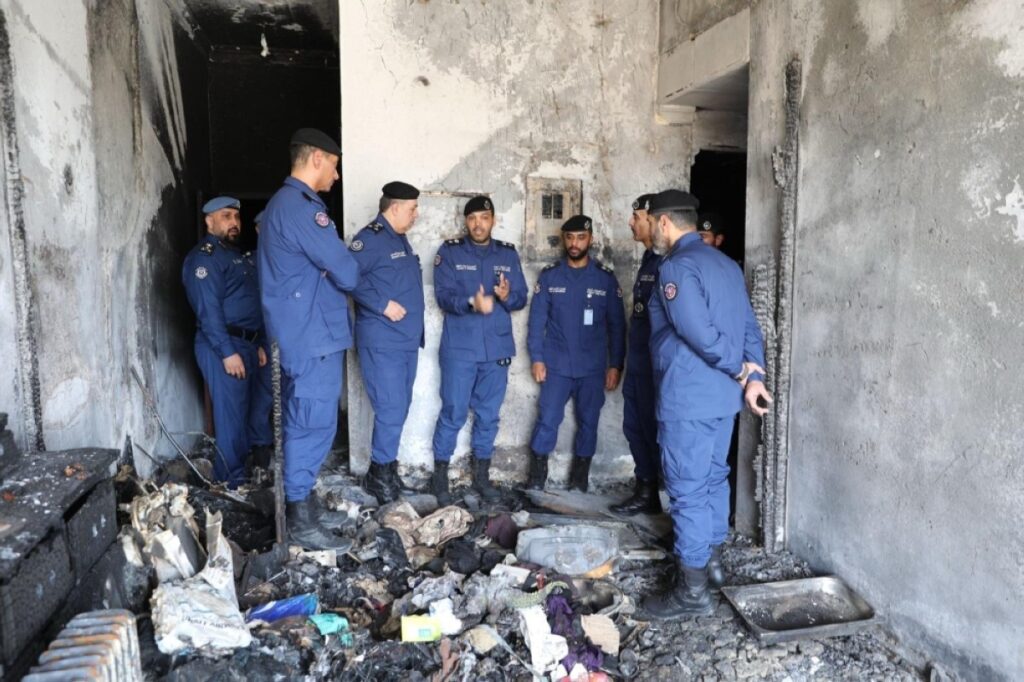KUWAIT: Acting Chief of Kuwait Fire Force Brigadier General Mohammed Al-Qahtani on Monday warned of the serious dangers posed by overcrowding buildings beyond their designed capacity, stressing that such violations critically jeopardize the safety of residents.
He also underscored the importance of keeping building entrances and rooftop doors unobstructed, as access during emergencies is vital to ensuring occupant safety. His statement came during a field inspection at the site of a tragic fire that broke out Sunday in a residential building in Riggae, which claimed the lives of six people and left several injured.
Following the blaze, the General Fire Force launched an inspection campaign Monday evening in Al-Rai, collaborating with several government bodies including the Public Authority for Manpower, the Public Authority for Food and Nutrition, the Environment Public Authority, and Kuwait Municipality. The campaign aimed to identify buildings and establishments violating fire safety and prevention regulations. Several violations were found, leading to administrative closures of multiple establishments for failing to meet the requirements of the Fire Force and other regulatory authorities.
Brigadier General Al-Qahtani emphasized the urgent need for property owners to fully comply with fire safety and prevention regulations approved by the Fire Force.
This call for stricter compliance comes amid ongoing efforts to improve fire safety standards in Kuwait. Last year, Lieutenant General Khaled Fahad, Acting Chief of the Kuwait Fire Force at the time, announced plans to introduce new safety requirements for investment buildings to further prevent fires. He revealed a project to link commercial buildings directly with the main Fire Force operations center, expected to be completed by the end of the year, though no updates have been provided since.
These measures followed a devastating fire in Mangaf, which killed 49 expatriate workers living in an apartment building. The tragedy highlighted critical safety failures, including locked rooftop exit doors and the use of flammable partition materials that accelerated the fire’s spread. — Agencies

